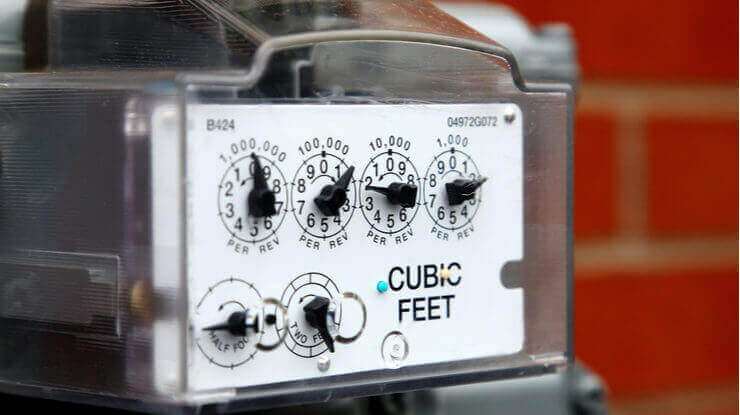CCF, MCF and Therms are all ways of measuring natural gas. Here’s how to understand the difference between them, how to convert to each type of unit, and why it matters when shopping for natural gas.
What do CCF, MCF and Therms measure?
CCF, MCF and Therms are all ways to measure natural gas.
MCF and CCF are volumetric measurements of natural gas.
- The CF in this measurement stands for cubic feet.
- The “C” in CCF stands for the Roman number for 100. So “CCF” means 100 cubic feet of natural gas.
- The “M” in MCF stands for Roman numeral for 1,000. So “MCF” means 1,000 cubic feet of natural gas.
Therms measure the energy output of a unit of gas.
- One therm is the amount of energy or heat equivalent to 100,000 BTU, or British Thermal Units.
- One BTU is the amount of heat it would take to raise the temperature in one pound of water by one degree Fahrenheit.
- You may also hear gas measured in MMBtu. M is the Roman numeral for million. One MMBtu equals 1 million BTU.
How are CCF, MCF and Therms Units Used?
All of these units of measurement are used by various utility companies to measure the amount of gas sold to their customers.
The therm is the industry standard used by almost all natural gas providers across the country.
In some parts of the country, gas companies have traditionally used CCF and MCF as their unit of measurement.
Whether you buy gas by volume or by its energy output? It is simply a different way to measure, much like the imperial vs. metric system.
Within your natural gas utility market, all natural gas suppliers will show their price the same way, whether therms, CCFs or MCFs. That makes it easy to compare natural gas rates across gas companies.
A CCF is 100 cubic feet of gas. An MCF is 1,000 cubic fee of gas. To convert from MCF to CCF, multiply MCF by 10. To convert CCF to MCF, divide CCF by 10.
How to Convert Between Units of Gas
It is possible, with a little bit of math, to convert between one form of measurement and another.
If you want quick math, it’s generally accepted that burning 100 cubic feet of natural gas (1 CCF) is the energy equivalent of burning one therm of gas. Or, simply put, 1 CCF = 1 Therm.
But the reality is that therms are measured based on the efficiency or “heat content” of the natural gas. And that measures changes depending on the type of gas and the location where it’s being used.
The Energy Information Administration measures the U.S. annual average heat content of natural gas delivered to consumers at 1,038 British Thermal Units (BTU) per cubic foot (CF) based on 2023 data.
So if you want the true conversion (which is what your chemistry teacher would want):
- 100 cubic feet (1 CCF) of natural gas equals 103,800 Btu, or 1.038 therms.
- 1000 cubic feet (1 MCF) of natural gas equals 1.038 MMBtu, or 10.38 therms.
Here’s how to convert between different unit measurements of natural gas:
- Therms to BTU: therms × 100,000 = BTU
- Therms to CCF: therms × 1.038 = CCF
- Therms to MCF: therms × 10.38 = MCF
- CCF to BTU: CCF × 103,800 = BTU
- CCF to Therms: CCF ÷ 1.038 = Therms
- CCF to MCF: CCF × 10 = MCF
- MCF to BTU: MCF × 1,038,000 = BTU
- MCF to Therms: MCF ÷ 10.38 = Therms
- MCF to CCF: MCF ÷ 10 = CCF
